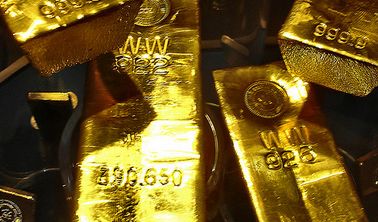Nyheter
David Hargreaves on the price of gold

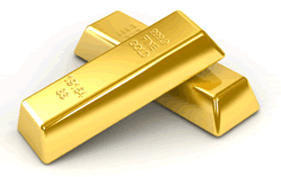 Let’s not speak of it dropping like a stone, but the gold price is coming off rapidly towards our $1200/oz resting place. Not yet at Goldman’s chosen $1050 nor remotely supporting Sprott at $1500 by Christmas. Meanwhile Goldcorp, the 4th largest producer, says it as a company can survive at $900 whilst warning that that would take a lot of production out of the market. Would anyone care?
Let’s not speak of it dropping like a stone, but the gold price is coming off rapidly towards our $1200/oz resting place. Not yet at Goldman’s chosen $1050 nor remotely supporting Sprott at $1500 by Christmas. Meanwhile Goldcorp, the 4th largest producer, says it as a company can survive at $900 whilst warning that that would take a lot of production out of the market. Would anyone care?
Were this any other commodity, the answer would be ‘yes’. Oil is being supported, desperately, at $100/bbl by Saudi Arabia cutting back production, but that is an industrial commodity. Gold complimented only by gemstones, is not.
No more than 10% goes into fabrication where it is both recyclable and sustainable. Because of its unique chemical and physical properties and relative scarcity it dominates the fear factors, of war and financial upheaval. Thus its price is volatile. To the surprise of many, but not WIM, it is on the slide. What will save it? What is its base case?
A world economic recovery of sorts is building, which will require increased financial liquidity. How will you pay me?
Not readily acknowledged is that barter accounts for up to one-third of all trade. After that it is dollars, plain and simple.
Others nibble at the edges but the greenback still has it. We rely for this upon a prosperous USA. When it first gained ascendancy, the dollar was physically gold-backed. It you walked into a New York bank you could demand, in exchange for $35 in notes, an ounce of metal. That persisted from 1935, when the US fixed it, until 1970, when the cost of the Vietnam War put an end to it. At the same time, the other currencies of note had fixed exchange rates to the dollar. Could we go back to that and if so, what would the price of gold need to be? Few dare tread that ground but here goes.
1. The need for money is as a trading lubricant, whether you are selling goods or services.
2. A common currency is vital and its reference to a store of value, equally so. Once the gold datum vanished it was replaced by perceived worth, such as the economic status of the issuing country. This is why the dollar dances to the tune of its employment data.
3. A return to a gold standard might alter all that. Is it possible and what would the price have to be?
Let us look:
- World purchasing power, GDP, is estimated by Wikipedia to be, by 2015, $100 trillion (100×10¹²).
- All gold in the world is estimated at c. 150,000 tonnes.
- Now at $1200/oz (relax we will get there) that is c. $5.4 trillion.
- So to have gold backed currency, we should need 100 ÷ 5.4 x 1200 = $22,000 per ounce. But that is double counting, because for every buyer there is a seller, so money counts twice. Even so, gold would need to be above $10,000 per ounce to become monetised again. Cannot see it happening can you?
4. Now this brings official holdings into play. They rate no more than about 30,000 tonnes worldwide and are being added to but slowly. The rest is stored, for a rainy day, under bedsteads and around body parts or in coins. It would take a lot of prising out.
Conclusion? Gold will continue to register the fear factor, military, economic and political. Right now these are seen to be containable so we feel comfortable with our short term price prognosis. Yet before you tuck yourself smugly into bed tonight, whisper a little prayer: God Bless America.
[hr]
About David Hargreaves
David Hargreaves is a mining engineer with over forty years of senior experience in the industry. After qualifying in coal mining he worked in the iron ore mines of Quebec and Northwest Ontario before diversifying into other bulk minerals including bauxite. He was Head of Research for stockbrokers James Capel in London from 1974 to 1977 and voted Mining Analyst of the year on three successive occasions.
Since forming his own metals broking and research company in 1977, he has successfully promoted and been a director of several public companies. He currently writes “The Week in Mining”, an incisive review of world mining events, for stockbrokers WH Ireland. David’s research pays particular attention to steel via the iron ore and coal supply industries. He is a Chartered Mining Engineer, Fellow of the Geological Society and the Institute of Mining, Minerals and Materials, and a Member of the Royal Institution. His textbook, “The World Index of Resources and Population” accurately predicted the exponential rise in demand for steel industry products.
Nyheter
Blykalla och amerikanska Oklo inleder ett samarbete
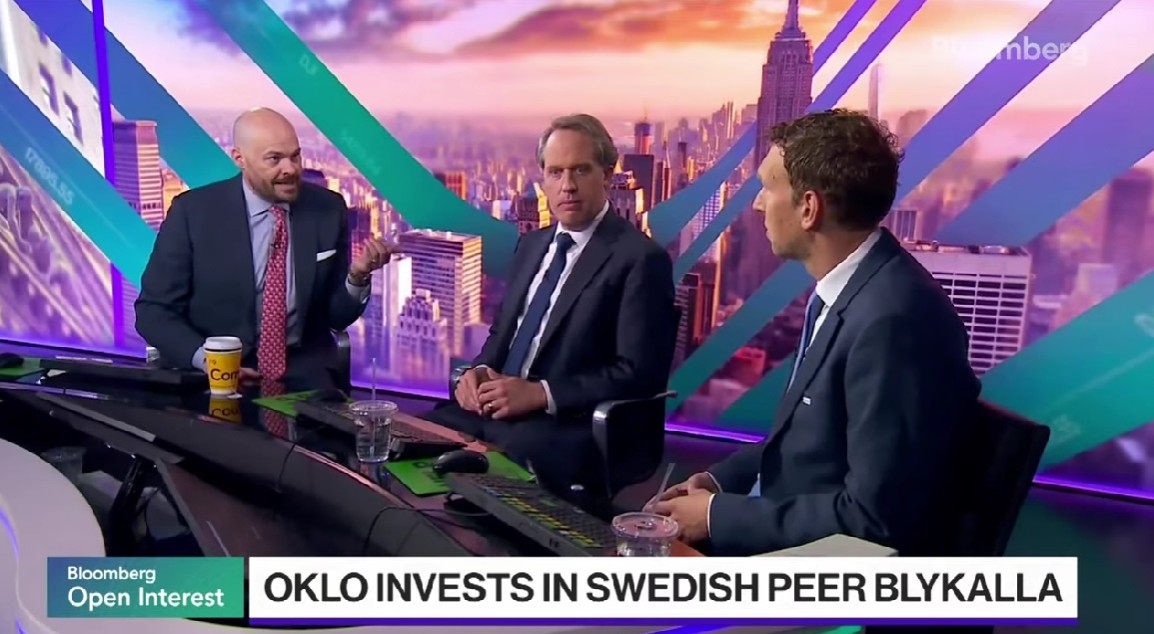
Kärnkraftsföretagen Oklo från USA och svenska Blykalla har ingått ett strategiskt partnerskap för att främja tekniksamarbete, samordna leverantörskedjor och dela regulatorisk kunskap mellan länderna. Samarbetet inkluderar att Oklo går in som en av de större investerarna i Blykallas kommande investeringsrunda med ett åtagande på cirka 5 miljoner dollar.
Genom ett gemensamt teknikutvecklingsavtal ska bolagen utbyta insikter om material, komponenter och licensieringspraxis i både USA och Sverige. Målet är att minska kostnader och tidsrisker i utvecklingen av små modulära reaktorer (SMR).
Blykalla utvecklar SEALER, en blykyld snabbreaktor på 55 MWe, medan Oklo fokuserar på natriumkylda reaktorer upp till 75 MWe för industriella och militära tillämpningar i USA.
“Det här samarbetet stärker det växande ekosystemet för avancerade reaktorer i en tid av globalt ökande energibehov,” säger Oklo-grundaren Jacob DeWitte. Blykallas vd Jacob Stedman tillägger: “Vår gemensamma industriella strategi kan hjälpa leverantörer att planera för uppskalning, oavsett vilken sida av Atlanten de befinner sig på.”
Intervju på Bloomberg om samarbetet
Nyheter
Fortsatt stabilt elpris – men dubbelt så dyrt som i fjol

Snittpriset på el för höstmånaderna september till november väntas landa på strax under 50 öre per kilowattimme. Det är nästan en fördubbling jämfört med hösten 2024, då snittet låg på drygt 30 öre. Men nivåerna är fortfarande betydligt lägre än under elpriskrisen 2022. Det visar elbolaget Bixias höstprognos.

Att elpriserna är högre än i fjol beror främst på lägre tillgänglighet i kärnkraften och en svagare hydrologisk balans efter en torr sommar. Även om hösten har börjat blött och september ser ut att bli den nederbördsrikaste månaden sedan 2018, räcker det inte till för att vända vattenbalansen.
– Höstens elpriser är stabila, men klart högre än i fjol. Det är framför allt osäkerheten kring kärnkraften som påverkar där Oskarshamn 3 har varit ur drift längre än planerat. Samtidigt har den hydrologiska balansen inte återhämtat sig efter sommarens underskott, trots den blöta inledningen på hösten. Men jämfört med krisåren 2021 och 2022 ligger priserna fortfarande på en låg nivå, säger Johan Sigvardsson, elprisanalytiker på Bixia.
I september bidrog bristen på kärnkraft till att elpriset nästan fördubblades jämfört med samma månad i fjol. Priset landade på cirka 40 öre per kilowattimme, att jämföra med 22 öre i september 2024. Flera reaktorer stod stilla, däribland Oskarshamn 3, Forsmark 1 samt Lovisa 1 och 2 i Finland. Trots mycket regn under månaden var vattennivåerna fortsatt låga efter den torra sommaren, medan blåsiga perioder tillfälligt pressade ner priserna.
I oktober väntas elpriset hamna runt 45 öre per kilowattimme, jämfört med 27 öre i fjol, och i november kring 60 öre, mot 43 öre förra året. Sammantaget ger det ett höstsnitt i system på knappt 50 öre, jämfört med drygt 30 öre samma period i fjol. Under krisåret 2022 låg snittet för höstmånaderna på över 1,15 kronor per kilowattimme, med perioder på upp mot 4 kronor.
Liten risk för höga höstpriser
Bixia bedömer att priserna kan komma att stiga tillfälligt om vädret blir kallare än normalt eller om kärnkraftsreaktorer får fortsatt försening i återstart. Om till exempel Oskarshamn 3, vars återstart redan skjutits på fem gånger, inte kommer igång enligt plan i mitten av oktober, finns risk att priserna ökar under andra halvan av månaden.
– Risken för pristoppar ökar ju längre in på säsongen vi kommer, eftersom förbrukningen stiger när temperaturen sjunker. Men väderprognoserna ser i nuläget gynnsamma ut, och även om det skulle bli kallare än väntat ser vi inte någon risk för extremt höga priser, säger Johan Sigvardsson.
Dyrare el i syd
Södra Sverige har betalat betydligt mer för elen än norra delarna. Priserna har legat på runt 15 öre per kWh i norr under september, medan syd haft priser på omkring 70 öre. En differentierad prisbild väntas även under resten av hösten, särskilt om kärnkraftsproduktionen i söder fortsätter att vara begränsad och det fortsätter att vara gott om vatten i norr.
Nyheter
Ett samtal om guld, olja, koppar och stål
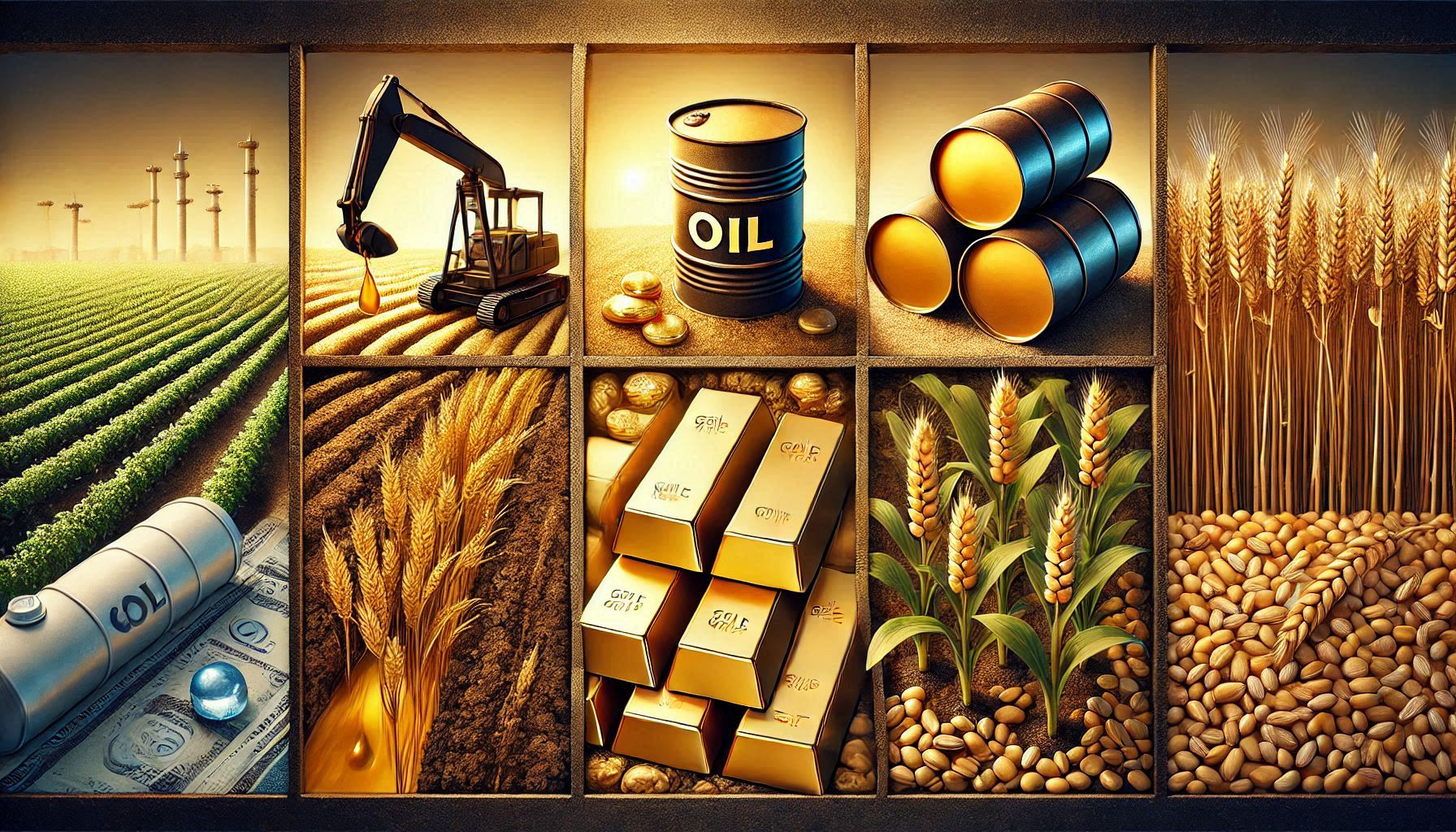
Samtal om att guldet ständigt slår nya prisrekord, att oljepriserna pressas och vad som händer på kopparmarknaden. Vidare kommenterar Jernkontorets Kristian Ljungblad läget i stålbranschen och hur de svenska stålbolagen mår.
-

 Nyheter4 veckor sedan
Nyheter4 veckor sedanEurobattery Minerals satsar på kritiska metaller för Europas självförsörjning
-

 Nyheter3 veckor sedan
Nyheter3 veckor sedanMahvie Minerals i en guldtrend
-

 Nyheter4 veckor sedan
Nyheter4 veckor sedanGuldpriset kan närma sig 5000 USD om centralbankens oberoende skadas
-

 Nyheter4 veckor sedan
Nyheter4 veckor sedanOPEC signalerar att de inte bryr sig om oljepriset faller kommande månader
-

 Analys3 veckor sedan
Analys3 veckor sedanVolatile but going nowhere. Brent crude circles USD 66 as market weighs surplus vs risk
-
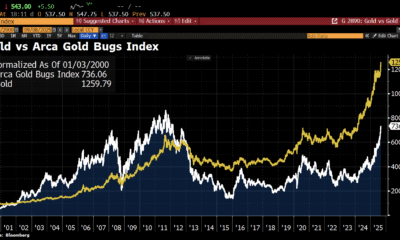
 Nyheter3 veckor sedan
Nyheter3 veckor sedanAktier i guldbolag laggar priset på guld
-

 Nyheter3 veckor sedan
Nyheter3 veckor sedanKinas elproduktion slog nytt rekord i augusti, vilket även kolkraft gjorde
-

 Nyheter2 veckor sedan
Nyheter2 veckor sedanTyskland har så höga elpriser att företag inte har råd att använda elektricitet






